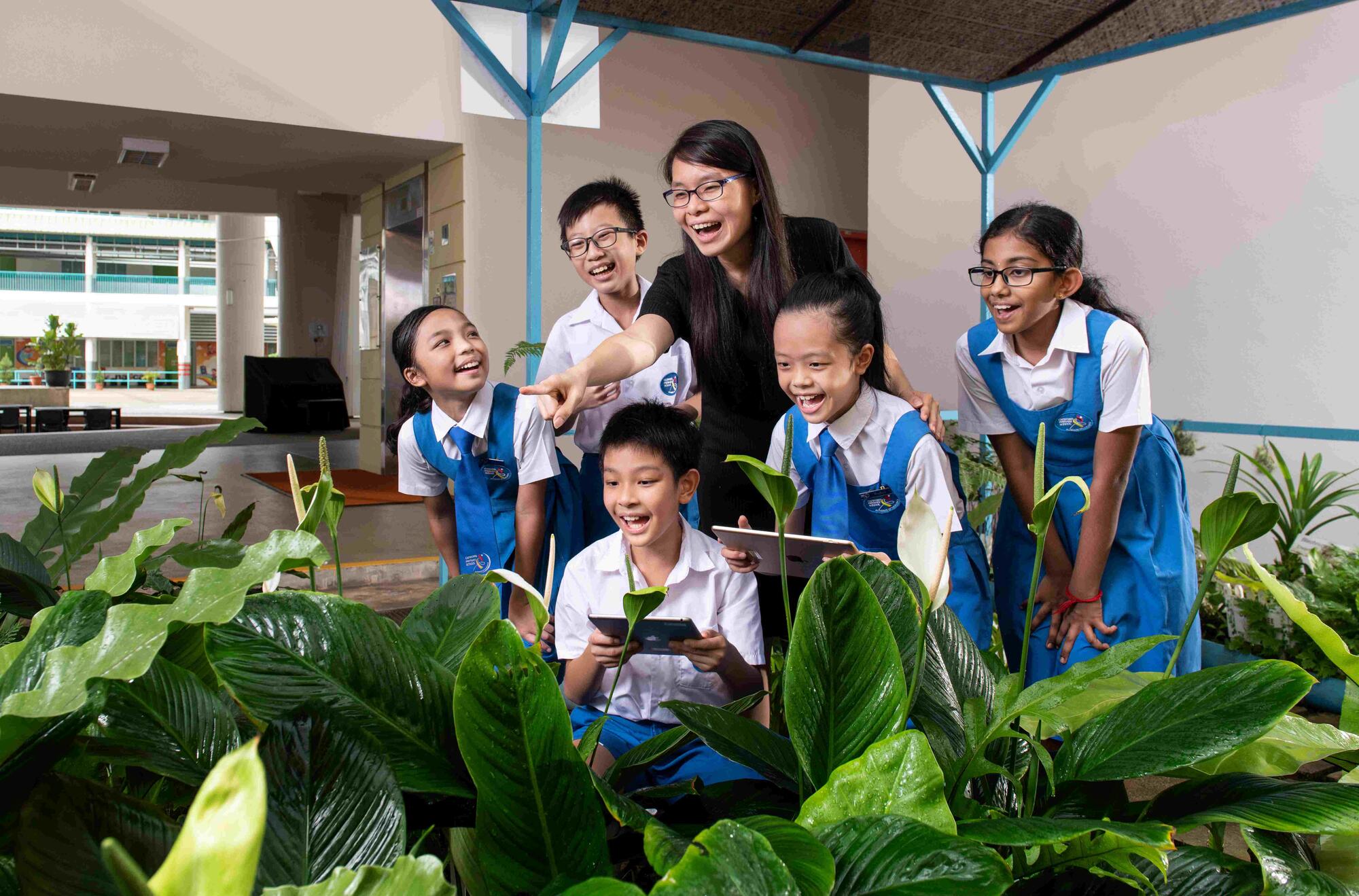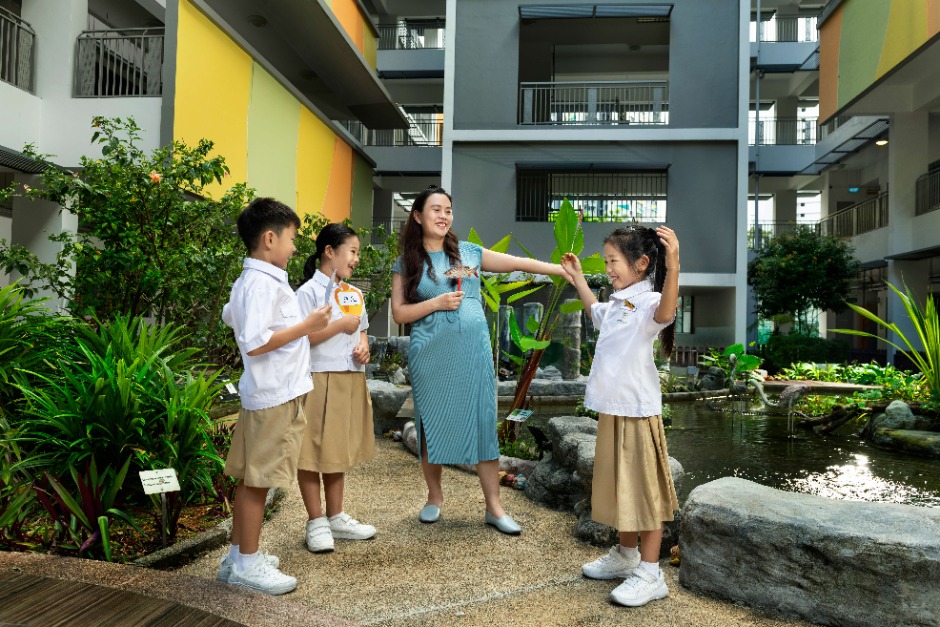Developing a School of Problem Solvers
21 Oct 2016
.jpg)
A problem-solving movement is spreading through St Anthony’s Canossian Primary, and Seing Jee Ching Jasmine is leading the charge. Coloured carabiners, Cookie Monster rubbish bins and cartoons re-dubbed with students’ voices are just a few of the unexpected ways teachers and students are making things better at their school.
Seing Jee Ching Jasmine, St Anthony’s Canossian Primary School, President’s Award for Teachers 2016 finalist
In 2014, Chinese Language teachers at St Anthony’s Canossian Primary were exasperated. Many students were not completing their xizi (??, or writing practice) homework, despite constant reminders.
But the department persevered. Convinced of the value of learning the correct stroke order for Chinese characters, they handpicked over thirty students and conducted focus group sessions to find out how xizi could be made more interesting. The kids threw up ideas like using iPads, incorporating colouring, and giving rewards.
Anything goes but definitely not writing in an exercise book with boring squares. Today, no one at St Anthony’s Canossian Primary writes xizi in exercise books. They use a custom-made practice book that comes with stickers. Primary 1 and 2 students grade each other’s work by shading in stars on each page, which can be accumulated and used to claim prizes.
Fixing it with design
Jasmine recounts the xizi revamp with pride, even though she teaches Maths, not Chinese Language. It is part of a larger movement she’s been driving to systematically identify and meet the needs of the student population.
The Design Thinking Protocol – which she introduced to the school three years ago – involves forming teams to examine issues unique to each Primary level, as well as Physical Education, Arts and Music, and Mother Tongue. The teams then brainstorm, collect data, prototype solutions, present them to management for approval, and implement them. Jasmine has singlehandedly trained her colleagues in these methods, and encapsulated them in a booklet given to all teaching staff. The teams meet regularly during school hours. Jasmine is there to facilitate and track their progress.
Her efforts have paid off. Jasmine gushes about how students became more confident in speaking Mother Tongue languages after they got to dub cartoons with their own dialogue and voices. Primary 3 kids became more proficient in times tables through singing multiplication songs while queuing up after recess. A group of Primary 2 students improved their self-management and organisational skills after the school got their parents to affirm their efforts by giving out stickers.
Some of the solutions were surprisingly simple and yet effective. To help Primary 1 students remember to get things done at home, coloured carabiners were attached to their schoolbags whenever they had homework to do, or forms that required their parents’ signatures. Parents, who were informed of this initiative, would prompt their kids when they noticed these carabiners. The tasks would get done, and the carabiners would be removed in school the following day. Students became motivated to minimise the number of attachments on their schoolbags, and got more efficient in clearing their to-do lists.
On top of personally facilitating all the project teams, Jasmine gets her hands dirty too. To help pupils in Primary 1 read more expressively, she worked with colleagues to put together a package of four books, a CD of teachers reading the books aloud, and a manual for parents. “We uncovered some hidden voice talents along the way – you should hear them!” she says.
It’s been three years, and the enthusiasm for design thinking remains high. Jasmine feels gratified whenever she sees her fellow teachers present their projects. “Some of them do it through skits, or show-and-tell. Some even rap! We have a great time sharing and learning together.”
By students, for students
With her colleagues fully on board, Jasmine is now turning her sights on students, starting with prefects. As Head of Department for Student Leadership and Partnership, she has introduced the Design Thinking Protocol to her charges. There’s been no shortage of the number of problems and solutions the girls have found, with her guidance.
One group of prefects noticed that most of the items in the lost and found corner belonged to Primary 1 and 2 students, so they came up with a simple campaign to teach them how to label their belongings. Another group found that straw wrappers were the main litter item in the canteen, and made posters reminding their schoolmates to dispose of the wrappers properly instead of leaving them to be blown everywhere by the wind. A third group will soon pilot a buddy system where new and experienced prefects do duty together, so the newer ones will feel less intimidated.
The most successful project thus far has been to encourage fellow students to discard rubbish in the bins by dressing them up as Cookie Monster from Sesame Street. A simple solution – the bins already happened to be blue, so they only had to add the eyes – but it worked.
Jasmine beams as she swipes through photographs of their projects on her phone. She’s glad that the girls have been resourceful enough to do so much without a budget, but even happier that the experience has taught them to look out for the needs of the school community.





.jpg)